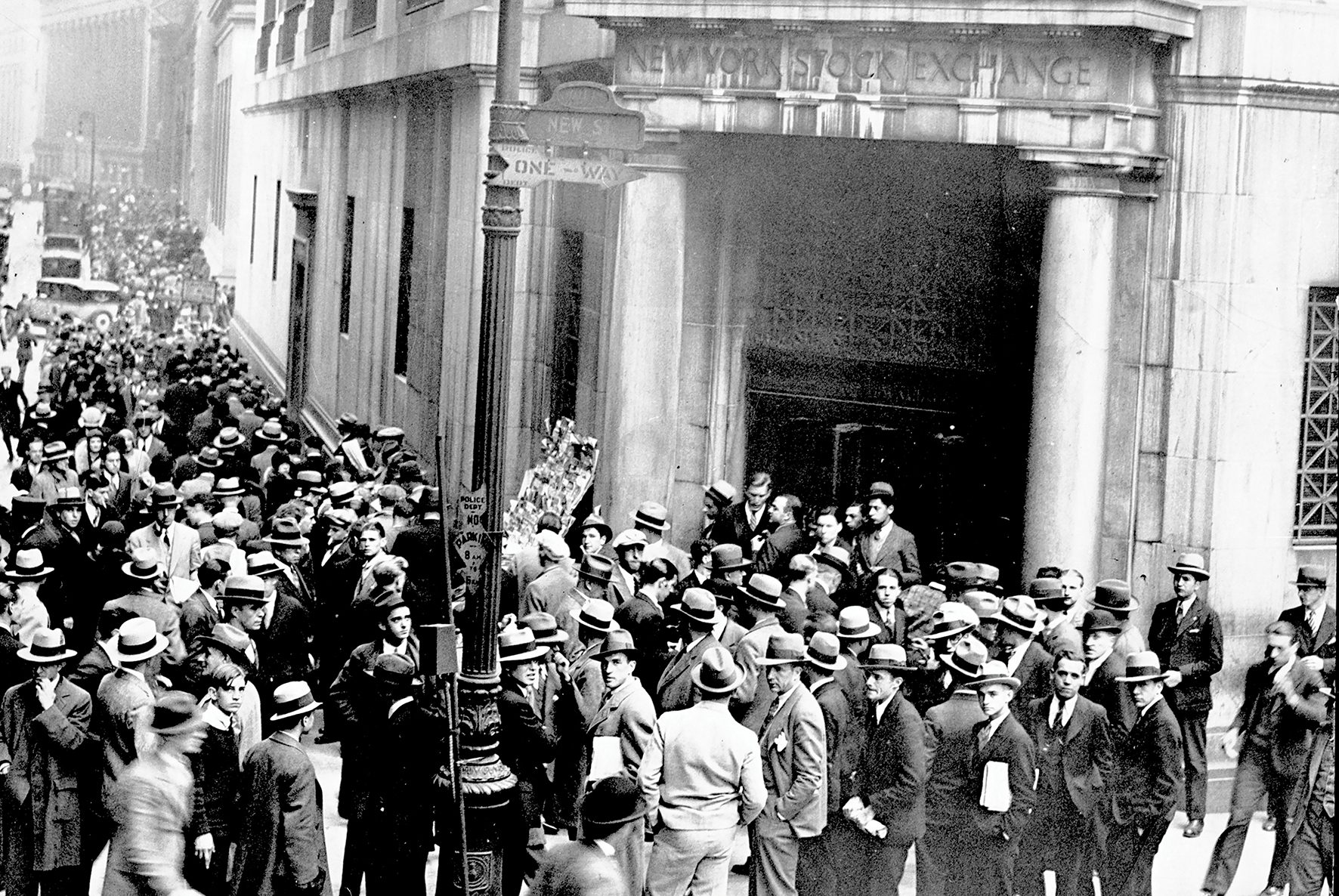 Dr. Seuss’s depiction of a Flit insecticide sprayer in one of his cartoons led to a significant endorsement contract with the company that lasted for 17 years. This long-term partnership provided substantial financial support for Seuss and his family, enabling them to weather the economic turmoil of the Great Depression.
Dr. Seuss’s depiction of a Flit insecticide sprayer in one of his cartoons led to a significant endorsement contract with the company that lasted for 17 years. This long-term partnership provided substantial financial support for Seuss and his family, enabling them to weather the economic turmoil of the Great Depression.
Ford’s Blood Donations: Resilience During the Depression
Gerald Ford, who would later become the President of the United States, attended college amidst the Great Depression. In order to make ends meet, he resorted to selling his blood every two months for $25 per donation. Interestingly, Ford’s determination and resilience during this challenging period helped shape his character. In addition to his financial […]
The Great Depression in 1931 and Cameroon
During the Great Depression in 1931, reports of American citizens suffering from starvation were so widespread that colonial-era Cameroon in West Africa collected funds to aid them. The amount raised was $3.77, equivalent to approximately $70 in today’s currency.
Eleanor Roosevelt held her own…
Eleanor Roosevelt held her own press conferences where only female journalists were allowed. This ensured they kept their jobs during Depression-era layoffs, earning a steady income & professional status.
The post Eleanor Roosevelt held her own… appeared first on Crazy Facts.
During the Great Depression, banker Mark…
During the Great Depression, banker Mark Welch Munroe convinced struggling families in Quincy, Florida to buy Coca-Cola shares that traded at 19 dollars. Later, the town became the single richest town per capita in the US with at least 67 millionaires.
The post During the Great Depression, banker Mark… appeared first on Crazy Facts.
During the Great Depression Clifton’s Cafeteria…
During the Great Depression Clifton’s Cafeteria eateries boasted the slogan “Dine free unless delighted.” In the original restaurant’s first three months of business, ten thousand customers took him up on the offer. Enough customers paid their bills to make them a success.
The post During the Great Depression Clifton’s Cafeteria… appeared first on Crazy Facts.
During the Great Depression, a prominent…
During the Great Depression, a prominent attorney flipped $2 (inflation adjusted $31) into $100,000 ($1,500,000). He then proceeded to award the money to the woman who could give birth to the most amount of kids in the following decade.
The post During the Great Depression, a prominent… appeared first on Crazy Facts.
Check out the Roving Horseback Libraries of the 1930s
If you think librarians are heroes now, wait until you hear about the women who saddled up horses in the early morning and set out to deliver books to Kentucky’s isolated mountain communities.
Talk about commitment to making sure everyone had reading material, right?
Image Credit: Kentucky LIbraries and Archives
The “book women” of The Pack Horse Library were part of President Franklin Roosevelt’s Work’s Progress Administration (WPA) initiative.
It was created to help America wriggle free of the grasp of the Great Depression – by 1933, unemployment had risen to 40% in Appalachia, and the roving horseback libraries were hoping to boost employment and literacy in one fell swoop.
The WPA paid the salaries of the book carriers, almost all of whom were women, but didn’t provide funds for much else.
Counties had to use existing libraries or ask local schools to help cover the cost of reading materials – donations also played a major role, as a 1940 notice in the Mountain Eagle proves.
Image Credit: Kentucky Libraries and Archives
People donated old magazines and newspapers, which were then cut and pasted into scrapbooks with particular themes like recipes, or maybe crafts.
One of these scrapbooks is on display today at the FDR Presidential Library & Museum in Hyde Park, NY.
That one contains recipes and an introduction that reads: “Cook books are popular. Anything to do with canning or preserving is welcomed.”
Image Credit: Kentucky Libraries and Archives
Libraries repaired books, and old Christmas cards were also donated to be used as bookmarks, to keep people from dog-earing the pages.
The women delivering these books and scrapbooks rode between 100 and 120 miles a week, almost always on their own horses or mules, along designated routes.
Like “real” postmen, they worked regardless of the weather, and in more remote locations, they ended up walking to their final destinations.
Most of them were locals, which was important, as mountain folks tended to only trust their own.
Image Credit: Kentucky Libraries and Archives
By 1939, 274 librarians were delivering books on horseback in 29 counties, and in total the WPA employed nearly 1000 “book women.”
By 1943, as the war effort erased unemployment concerns, the WPA dissolved and funding ended for the program, though a decade later, mobile book services resumed in the area.
This time they went with the “bookmobile,” though, instead of librarians astride horses.
Image Credit: Kentucky Libraries and Archives
The book women, and the librarians in the area who followed in their footsteps, were more than a source of reading material – they helped their remote communities in other ways, too.
They read to the illiterate, fulfilled requests, and just helped people feel connected to their communities and the world at large.
One recipient said “Them books you brought us has saved our lives,” and an article in the Mountain Eagle said of the Letcher County library, “The library belong to our community and to our county, and is here to serve us …It is our duty to visit the library and to help in every way that we can, that we may keep it as an active factor in our community.”
Image Credit: Kentucky Libraries and Archives
Proof that books, and libraries, make a difference. They matter, and so do the people on the other end of the transaction, no matter where they live or how well they read.
Something to remember still today, if you ask me!
The post Check out the Roving Horseback Libraries of the 1930s appeared first on UberFacts.
10 Sobering Photos from the Great Depression Era
When the stock market crashed in October 1929, the entire country was plunged into a disastrous economic downturn lasting until the 1940s. In those years, families suffered destitution, starvation and breakdowns. It was the worst economic depression the industrialized world had ever seen.
Here are 10 photos that illustrate the devastation of the era.
1. Titled “Migrant mother.”
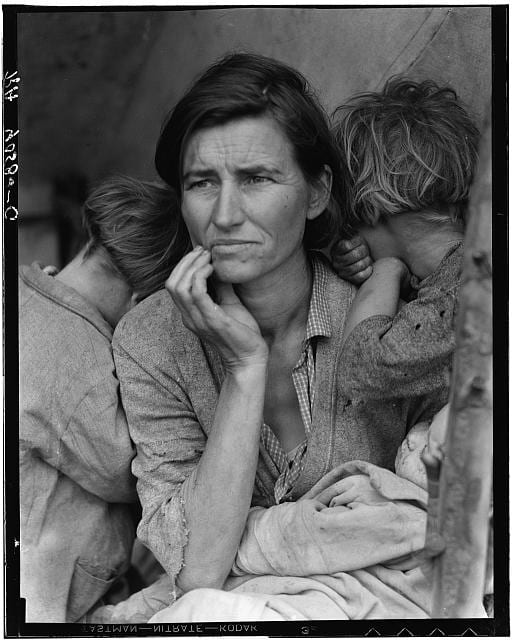
Photo Credit: LOC.gov
This is perhaps the most famous of all Great Depression photos. It shows Florence Thompson, a California pea picker, with three of her seven children. She was 32 years old.
2. Memphis 1939, the sign of the Hotel Clark says it’s the best service for “colored only.”
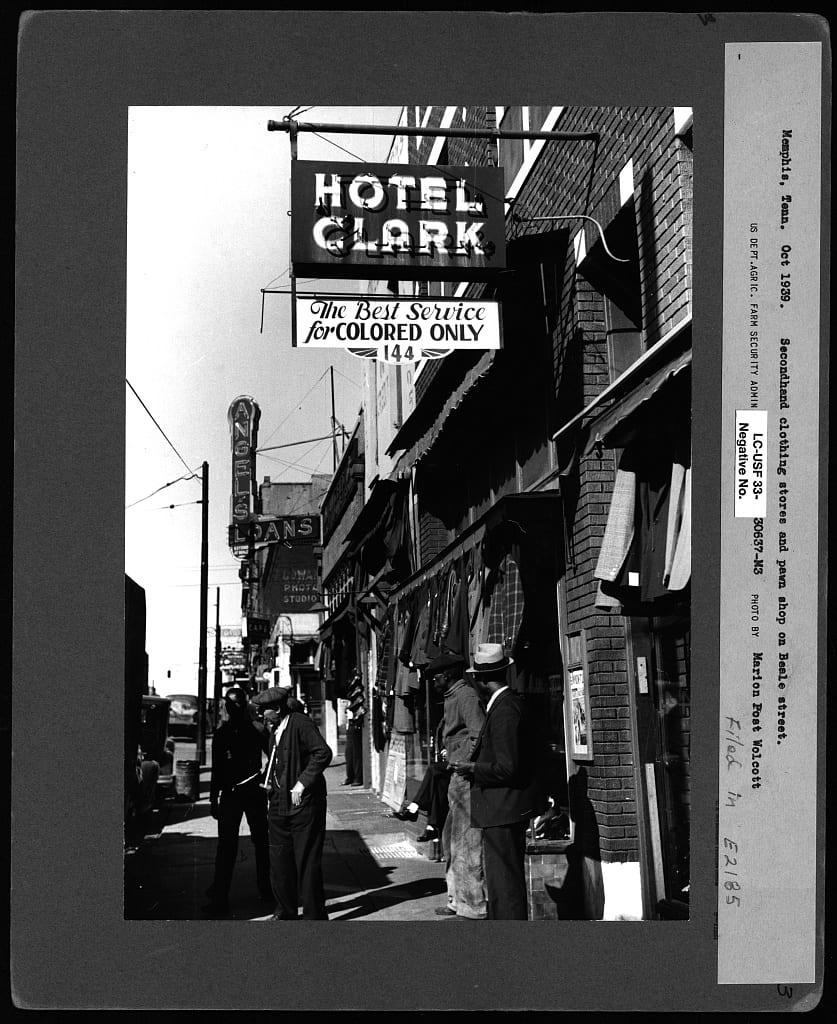
Photo Credit: LOC.gov
Laws against segregation would not be enacted until the Civil Rights Act, 25 years in the future.
3. A crowd gathered outside the New York Stock Exchange after the crash.

Photo Credit: US Gov, public domain
Wall Street panicked and investors were wiped out. The event abruptly started the Great Depression.
4. Unemployed men sleeping in the park in Minneapolis, 1939.

Photo Credit: LOC.gov
Rampant unemployment led to rampant homelessness.
5. Meal time at the Sioux City, Iowa, homeless men’s bureau for unattached men, 1936.

Photo Credit: LOC.gov
Boarding houses, rented rooms and shelters were common.
6. Sharecropper’s children in 1935.

Photo Credit: LOC.gov
Landlords collected government farm subsidies and used the money to mechanize farms, heavily reducing their need for labor.
7. Sharecropper’s wife and baby, Arkansas, 1935.

Photo Credit: LOC.gov
Sharecroppers were often the poorest of the poor. In response to the mechanization of farms, bad living conditions and unfair terms of their leases, sharecroppers unionized during this time.
8. Children in the tenement district, Brockton, Massachusets, 1936.
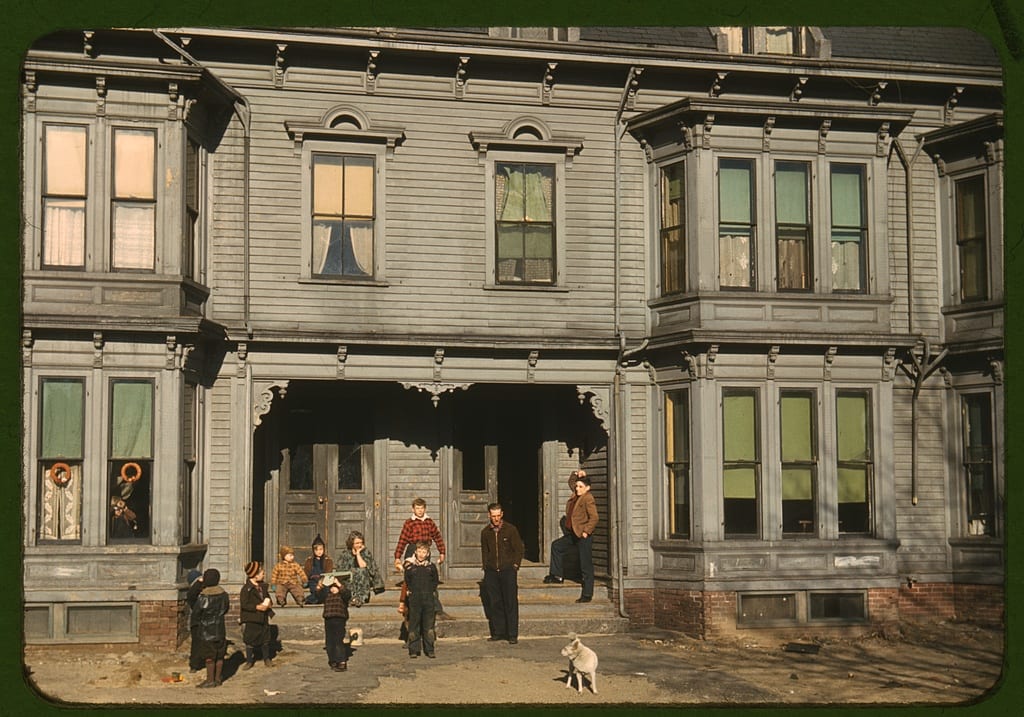
Photo Credit: LOC.gov
Tenements in the major eastern cities, like New York City and Boston, were homes to the waves of immigrants that become the working class.
9. Men sleeping in railroad station, Radford, Virginia.
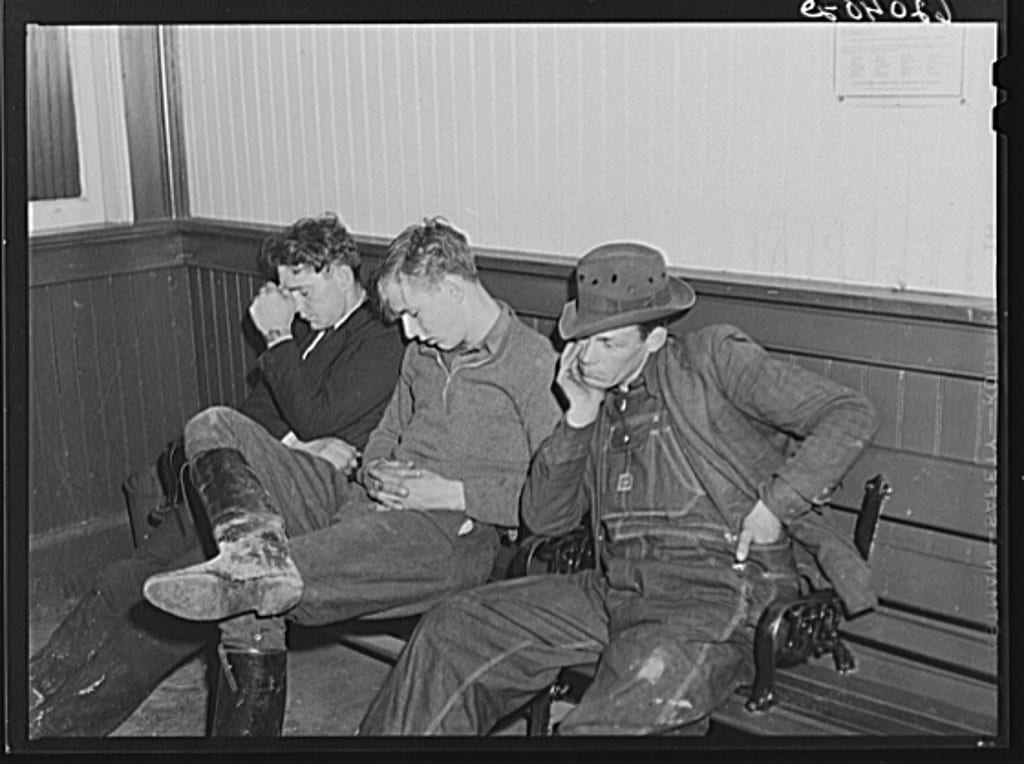
Photo Credit: LOC.gov
From out of town and working in the powder plant, they slept in the train station because they had no where else to go.
10. Family from Georgia in tent with neighbor’s child, eight or ten men, two women and two children.

Photo Credit: LOC.gov
The tent was their permanent home. Men slept in shifts as construction workers in Alexandria, Louisiana, 1940.
The economy didn’t fully recover until the end of World War II with sharp reductions in spending and taxes, and the end of war-time economy. It wasn’t until the 1950s that America began enjoying broadly renewed prosperity. Although poverty and food scarcity is still a problem for many, the levels of unemployment and despair felt by depression era Americans have not been seen since.
The post 10 Sobering Photos from the Great Depression Era appeared first on UberFacts.
In the early 20th century
In the early 20th century, trains in the US were destroyed in staged head-on collisions in front of live audiences for entertainment. This ended in the 1930s as it was seen to be wasteful of old but otherwise useful locomotives at the height of the Great Depression.
